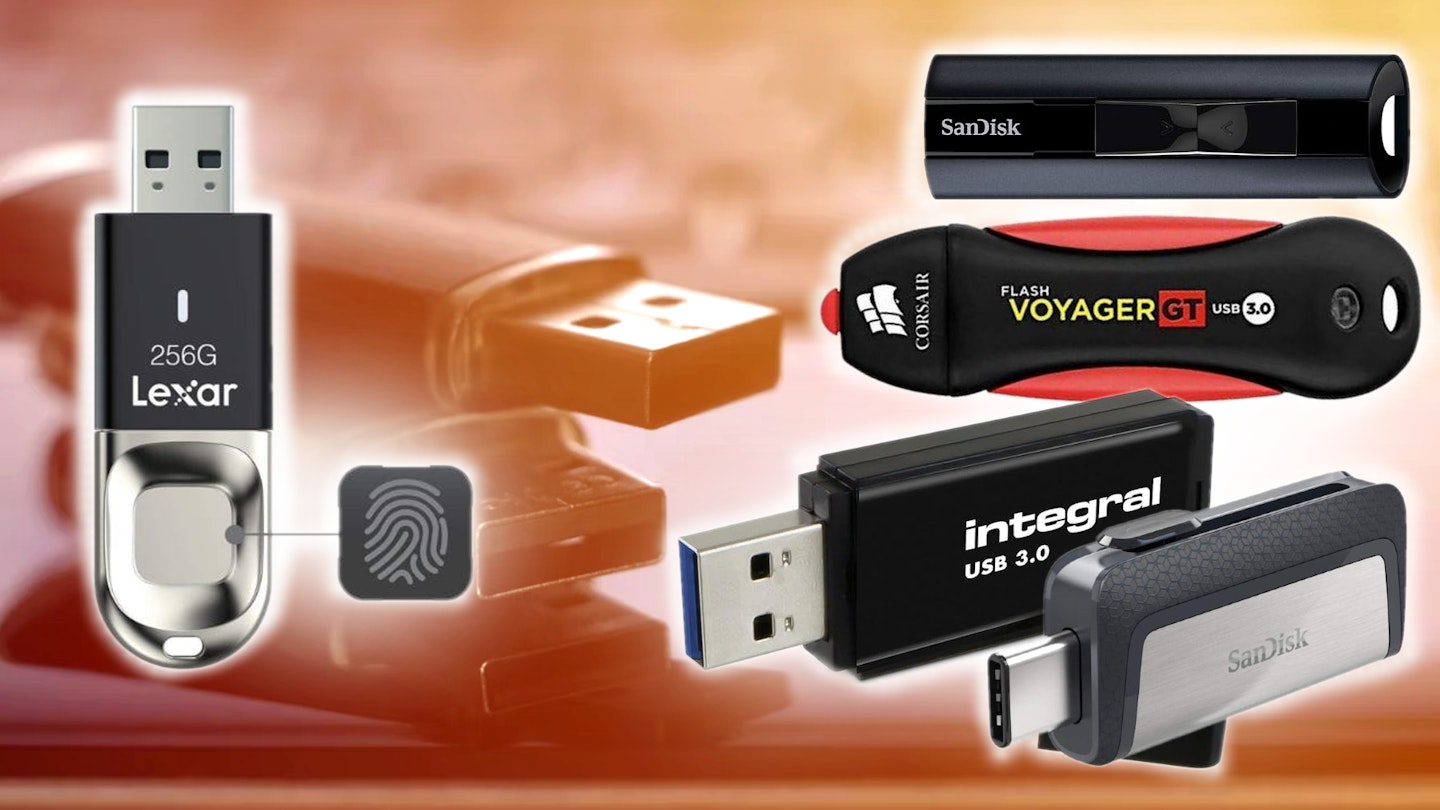The latest and greatest TVs boast some amazing features that viewers love to tinker with, but when it comes to recording most of them are useless without one of the best USB sticks for smart TVs. Why? Well, don't forget that even the best TVs don't come with a way to store your favourite shows. So, buying one of the best USB sticks for smart TVs should be right on the top of your list as an essential TV upgrade.
The menus on a smart TV are very easy to get lost in, but one extra-powerful option may be hard to find: The ability to pause, rewind and record live television. This amazing feature tends to go unnoticed – and that's sometimes simply due to their lack of internal memory. No storage drive? No recordings. You may not even see a record option until an external storage device is plugged in.
The best Amazon Prime Day deals on USB sticks
We interrupt your scrolling to let you know that the Amazon Prime Day sale is officially happening between 8– 11 July 2025. Amazon are offering amazing deals to all Amazon Prime members, so get ready to discover some excellent bargains on USB sticks. But remember, you can only get these deals if you’re a member, so sign up to Amazon Prime today if you want to bag some top-quality products at their lowest prices yet. We've rounded up the best offers below. Or, keep scrolling for our full buyer's guide.
The best Amazon Prime Day sale USB stick deals:
Over £50 off: Lexar JumpDrive Fingerprint F35 PRO 256GB, WAS £114, NOW £60
Save 17%: SanDisk 128GB Ultra Flair USB 3.0, WAS £11, NOW £9
43% off: SanDisk 256GB Ultra Dual Drive USB Type-C, WAS £31, NOW £18
Now back to our regularly scheduled content.
Thankfully, extra memory is easy enough to get hold of. Most USB memory sticks - including some of the best USB-C memory sticks – are more than up to the job. These can be plugged right into one of a smart TV's USB ports. You then use the TV to select how you want that stick to be used for your recordings. Some models, including the most common 40 or 50-inch smart TVs, will even offer up the function once it detects the device.
Best USB sticks for smart TVs at a glance:
After double-checking that your TV is compatible and has this recording functionality, you'll need to make sure that the stick you choose is up to the job. There are three key features to look for: USB 3.0, speed, and size. We have an explanation of this in our guide below. So, let's dive into our selection of the best USB sticks for smart TVs.
How we chose these products
We selected our pick of the best USB sticks for smart TVs based on reliable and trusted brands, average user reviews, price, and suitability for each use case. We look carefully at the technical specifications of all products before we recommend them to ensure that they will meet buyers' needs without requiring modifications or costly additions to function as intended. With the best USB sticks for smart TVs , our main focus is on storage capacity, build quality, USB connection speed, plus extra features for enhanced security and connectivity. Our writers also choose products based on hands-on experience where we own or have reviewed them ourselves. Retailers are selected based on price, availability and reputation as reliable and trusted sellers.
Please note: All prices are correct at the time of writing. Prices, stock and deals are subject to change without notice.
Best USB sticks for smart TVs in 2025
Best overall USB stick for smart TVs
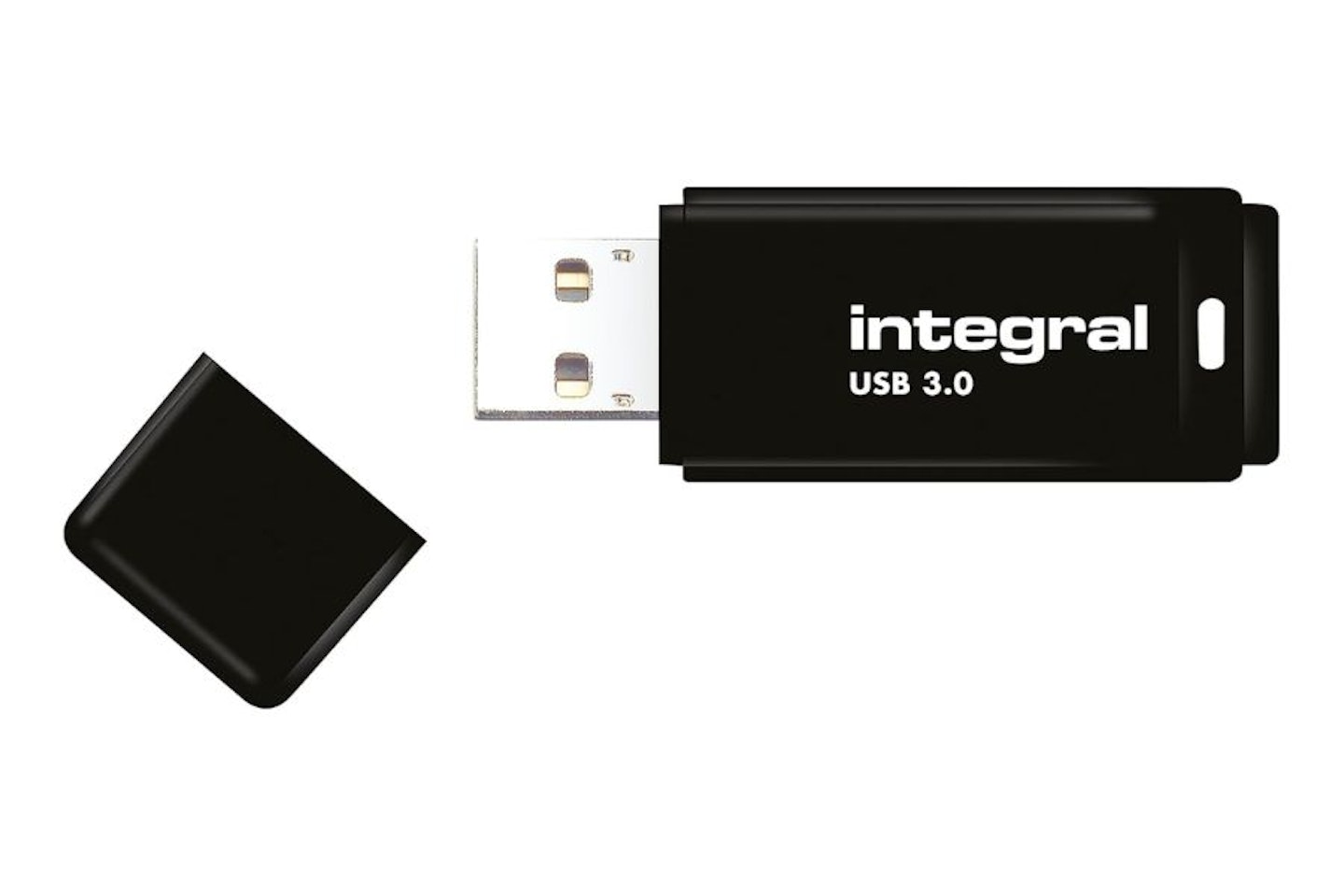 Integral
Integral Not only does our favourite USB stick come with a practical 512GB of storage, it also has the latest version of USB 3 (3.2) for top speed and connectivity. Despite coming in a couple of brighter colours, we and a handful of users do find the build and design of this Integral drive a little no-frills on the outside it's the inside (and the price) that counts.
Your TV will be able to both read and write to this drive without a hitch, and the drive itself is quite compact compared to some others – so it'll slot out of sight and not take up too much room behind your set. The two-year warranty as standard is a statement to the quality and reliability on offer, another reason why the Integral 512GB is our favourite USB stick on this list.
Pros
- A great balance of price and storage space
- USB 3.2 for the latest fast data transfer – perfect for TV playback and recording
- Compact and fairly discrete design
Cons
- A few users say the build is a little lightweight
| Read speed | Read speed up to 120MB/s and write speed up to 15MB/s |
| Connection type | USB 3.0 |
| Storage capacity | 1TB |
| Additional features | Two-year manufacturer's warranty |
Save 17%
Best budget USB stick for smart TVs
 SanDisk
SanDiskWe think this is one of the best value USB sticks for TV recording to be found. Best of all, it's made by renowned brand SanDisk. The SanDisk 128GB Ultra Luxe USB stick is ideal for watching your favourite movies and shows, largely thanks to its compact size.
Discrete and durable, we appreciate the brushed metal casing for accidental damage protection. On look-and-feel alone, the SanDisk Ultra Luxe feels like much more expensive item. That said, while this model of the SanDisk Ultra Luxe only has so limited storage to keep the price down (if you're planning to watch TV in 4K, look for a larger drive) some users also find they wish the port itself had a cap to keep dust and dirt out of it. But we think that's a relatively minor concern with a drive at this price from this brand.
Pros
- Great value USB stick for TV recording
- Durable and compact to endure wear and tear
- Safe and secure against prying eyes with SanDisk Secure Access
Cons
- Small storage capacity
- Some users wish it had a protective cap
| Read speed | 150MB/s |
| Connection type | USB Type-A |
| Storage capacity | 128GB |
| Additional features | File recovery software included |
Save 43%
Best USB C stick for smart TV recording
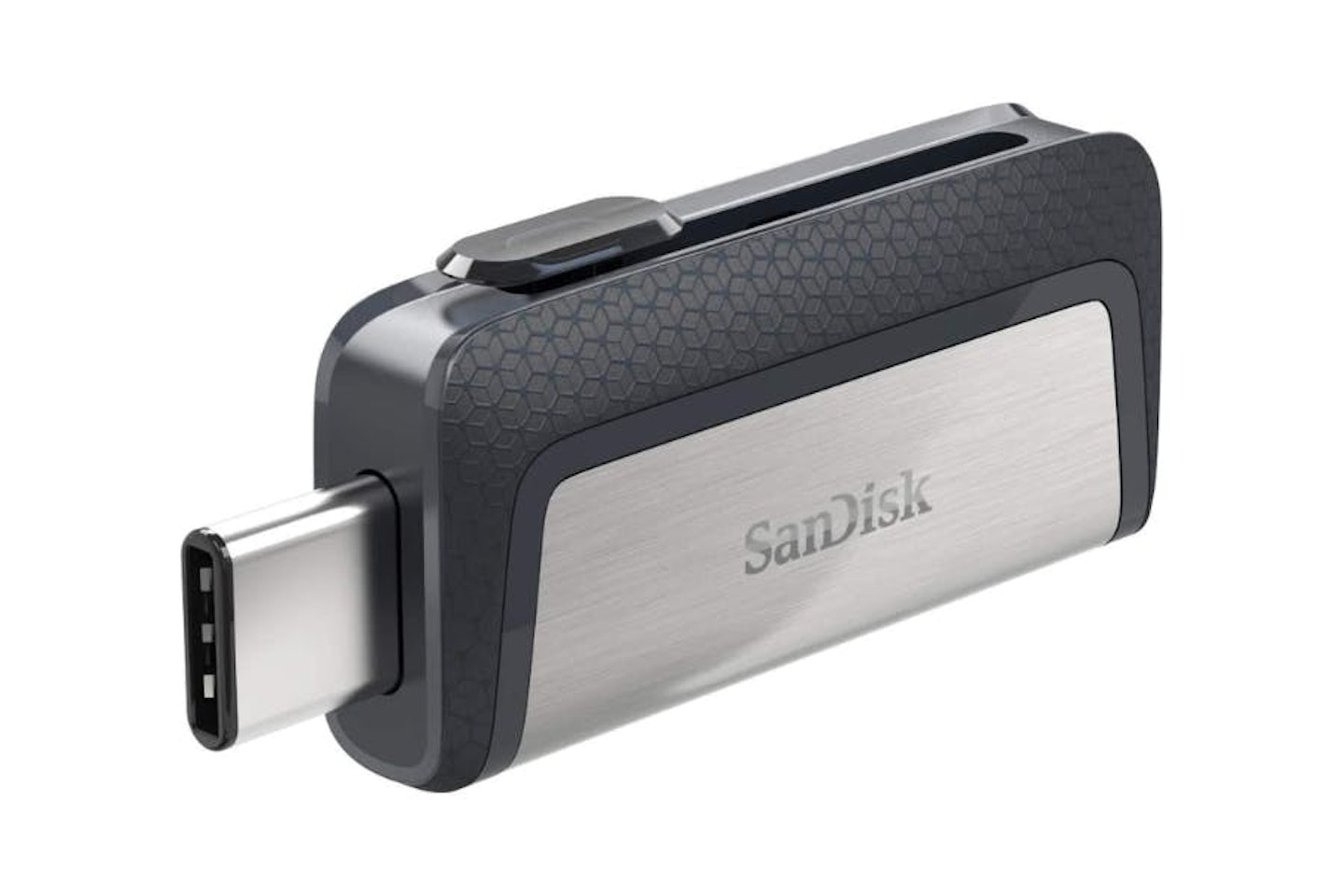 SanDisk
SanDiskFor us, SanDisk has ticked most of the boxes here, with a dual connector – giving you the option to connect to both USB 3.0 and USB Type C devices. The latter is handy for transferring video files from a laptop or mobile device so you can view them on your TV. You get a decent amount of storage – 256GB, which more than enough for most. Plus, you get that trademark SanDisk reliability at an impressively low price tag. The read speed for this 256GB capacity stick can reach a read speed of 150MB/s, which is ideal for watching back 4K or HD video and will give your TV plenty of headroom to reach its full potential.
The type-C and type-A compatibility serve a neat purpose, too; they're much more versatile for tablet, laptop, and phone users. An added plus is that a neat slider will retract the port you're not using, keeping it out of harm's way until you need it; although, our research found some users who thought the mechanism was a little fiddly. That said, for its sheer flexibility we think the Ultra Dual Drive is one of the best SanDisk USBs out there.
Pros
- Ample storage for the average viewer
- Dual USB connection types
- Fast read speed
Cons
- Some may find the sliding mechanism fiddly
| Read speed | 150 MB/s |
| Connection type | USB 3.1 |
| Storage capacity | 256GB |
| Additional features | Smartphone compatible |
19% off
Best compact USB stick for smart TVs
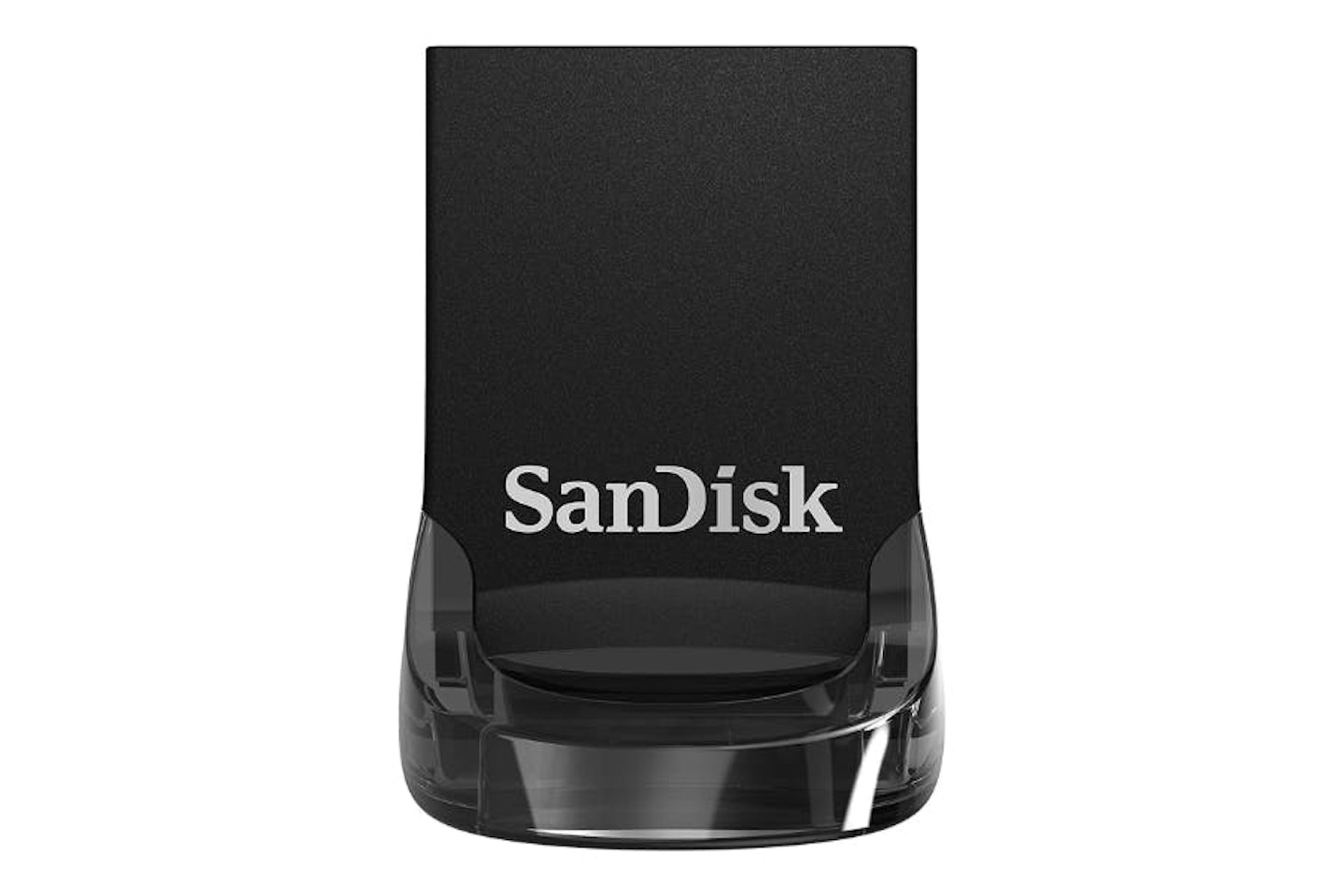 SanDisk
SanDiskA staggering 512GB storage capacity isn't the only thing that impressed us about this SanDisk USB drive. We think that this is the one for you if your TVs USB port is right on the front bezel or even if your TV has a side-facing USB port. This will seamlessly slot into any USB port in your TV and hardly be noticed. Plus, you're not likely to run out of space for quite a while.
There's only a USB 3.0 connector, so there are no dual connection types here, and (as some users mention) the read speeds are a little slower than some. But, for us, all of that is a fair trade-off when you consider the ultra-small form factor here.
Pros
- Very large and practical storage capacity
- Ultra-compact design – won't spoil the look of your TV
- SanDisk reliability and sturdy build
Cons
- Slow-ish read speed
- Portable, but so small could be easily misplaced
| Read speed | 130 MB/s |
| Connection type | USB 3.1 |
| Storage capacity | 512GB |
| Additional features | Five year warranty |
5.
SSK 2TB USB C Drive Up to 550MB/s
15% off
Best ultra-high capacity USB stick for smart TVs
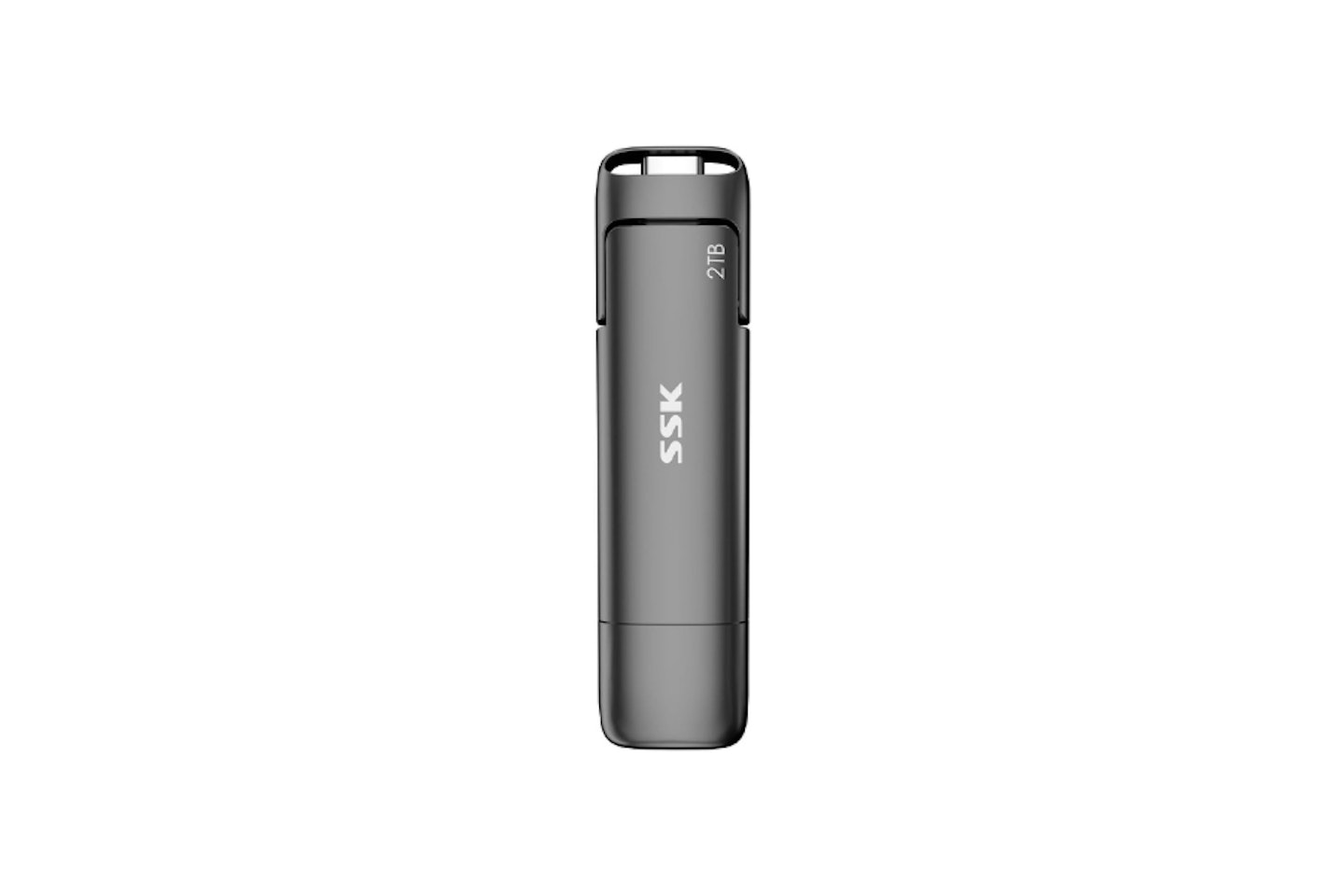 SSK
SSKFor the ultimate USB stick for your TV, we think you cannot do better than SSK's 2TB dual USB. With both USB Type C and USB 3.2 connections to utilise, this is perhaps one of the best USB sticks on the market. This rapid dual drive stick clocks in at a staggering 550 MB/s, breaking our expectations of what a USB stick is capable of.
Downloading libraries of films and TV shows onto the SSK 2TB USB is quick and easy, thanks to the SSK's sheer boundless space. If we were to nitpick the SSK is particularly large, which makes sense, but– as some users mention – it can make the USB stick protrude from some TVs more than others, leading to some potential mishaps whilst cleaning or on-the-go.
Brief downsides aside, there's no denying just how brilliant the SSK 2TB dual-drive is. You won't find a faster, larger drive at this price.
Pros
- Second-to-none read speeds – ideal for recording 4K
- Great dual USB connectivity
- Truly excellent storage capacity
Cons
- A slightly more sizable case than others, so ensure your TVs USB port is recessed enough to hide this away
| Read speed | 550 MB/s |
| Connection type | USB 3.2/USB Type-C |
| Storage capacity | 2TB |
| Additional features | Wear-resistant, dual USB |
Best retractable USB stick for TV recording
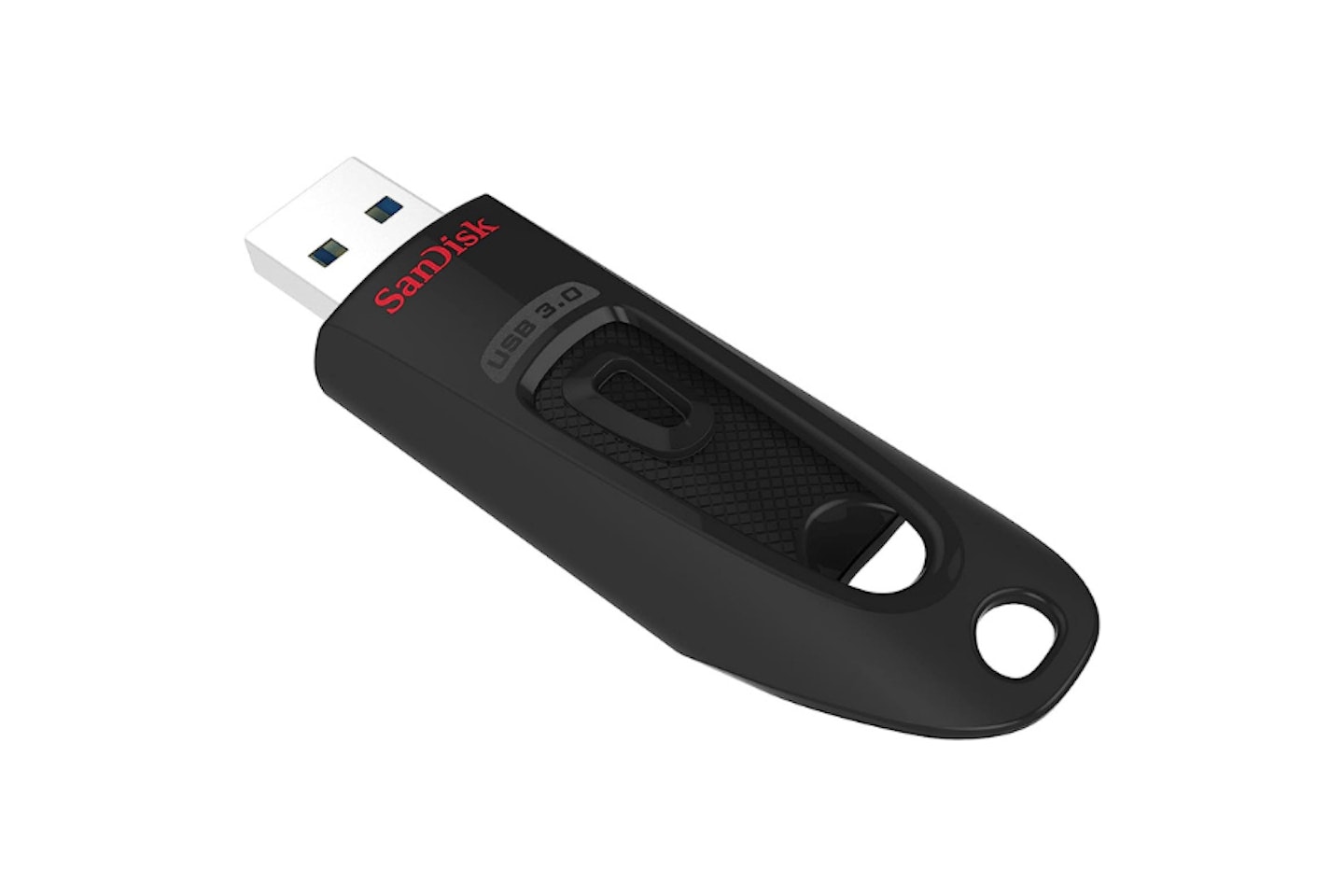 SanDisk
SanDiskWe think that SanDisk's 512GB USB drive is a neat option for great TV recording and its overall design is pleasing to use and handle. We love that the design helps to avoid any bending or breaking of the connector thanks to its smooth, retractable design – a real plus for active types or if you're just out and about. There's much less chance of losing your precious film library due to hardware damage.
Quickly transfer movies to your smart TV, and in less than 40 seconds, you'll be able to watch ultra-HD films how they were meant to be experienced, thanks to the SanDisk Ultra's impeccable 130 MB/s read times. Some users so think that the build is a little average, but as it's a SanDisk that probably places it well above the build quality of other similarly-priced brands.
Pros
- Solid design made for longevity
- Fantastic reading speeds for rapid file transfer
- Excellent value, perfect for recording TV
Cons
- The build quality is fine, but some users find it average
| Read speed | 130 MB/s |
| Connection type | USB 3.0 |
| Storage capacity | 512GB |
| Additional features | Retractable USB connector |
Save 42%
Best for secure USB stick for smart TV recording
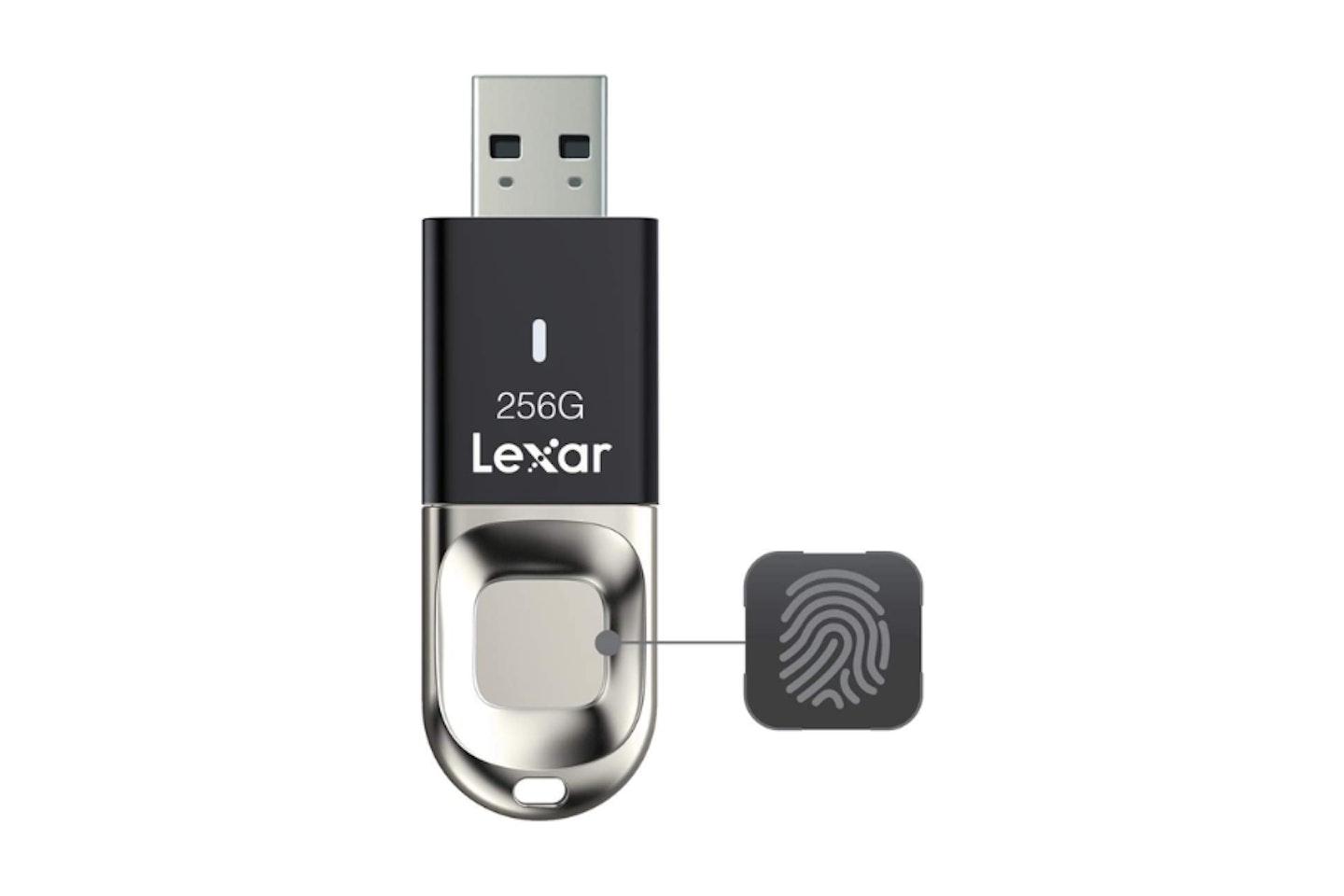 Lexar
LexarThe Lexar JumpDrive Fingerprint F35 PRO is a 256GB powerhouse of speed and good looks. A blistering 300 MB/s read speed is excellent for all your recording and playback needs. But of course, the real trick up its sleeve is fingerprint recognition – a welcome feature we don't see on affordable USB sticks very often.
You may wonder why you need this feature, but consider this: you may have one USB stick for everything – your work, documents, photos and, of course, your recordings. So, imagine if you misplaced it. With the Lexar JumpDrive, your files are encrypted, and the drive can't be accessed until you've used your fingerprint on the USB stick itself. Perfect for the security-conscious boxset binger. Our main gripe is that it's not Mac-compatible, and some users do find the fingerprint recognition process relies on making sure you've set things up accurately to begin with. That said, this is true of most fingerprint recognition devices (as is having clean, undamaged fingertips) so it's a security feature we have a lot of time for.
Pros
- Very fast read speeds thanks to USB 3.0
- It is extremely secure, so if you need it for work purposes, you can leave it plugged into your TV without worrying
- Very sturdy and well-designed case
Cons
- Not compatible with Mac
- Fingerprint recognition can require patience
| Read speed | 300 MB/s |
| Connection type | USB 3.0 |
| Storage capacity | 32GB |
| Additional features | Biometric fingerprint scanner |
Best affordable USB stick for storage
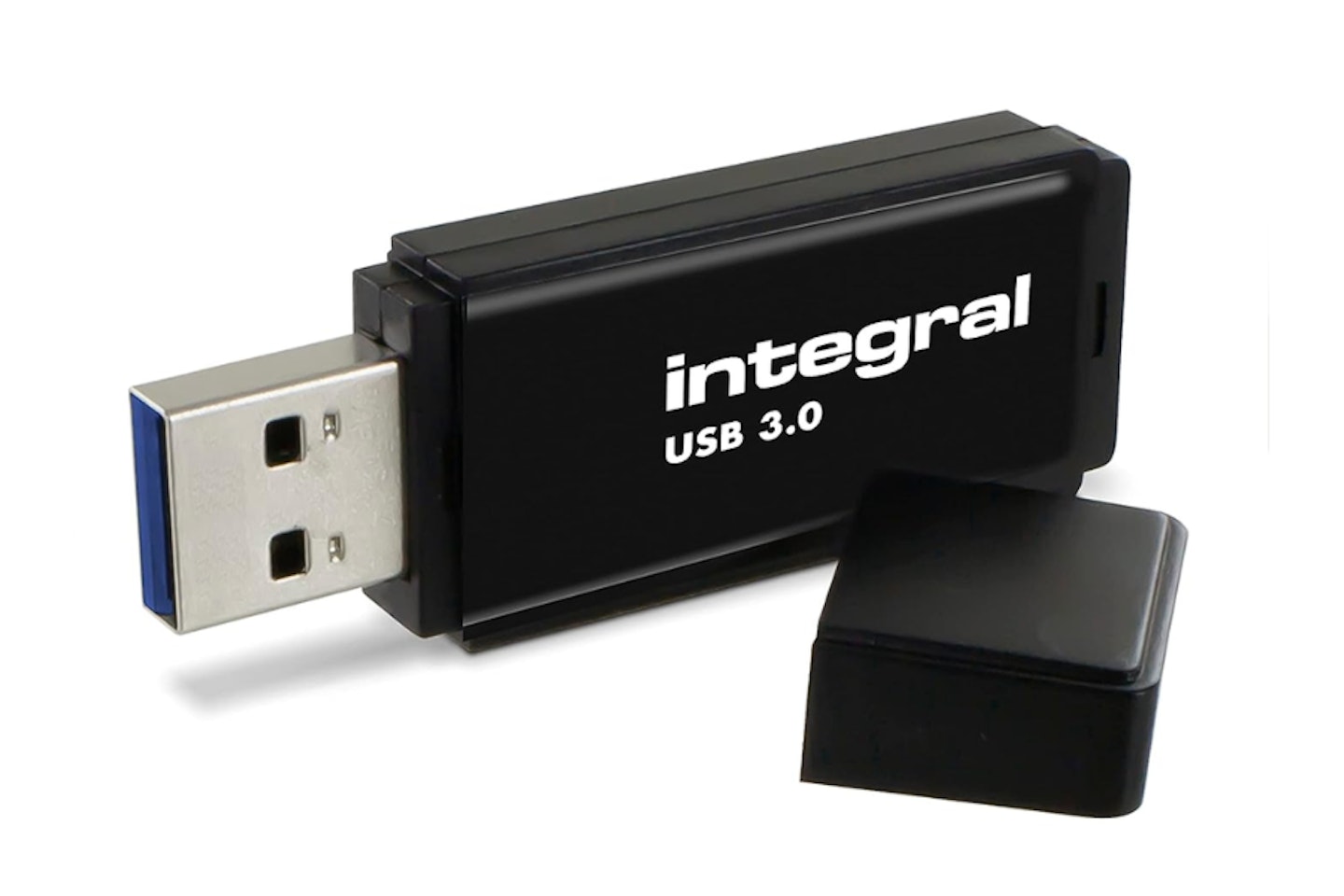 Intergral
IntergralTransfer a library of films and TV shows to your television in moments with this USB 3.0 stick. The Integral 1TB not only has superior storage, but it crams i all into a slim and attractive form factor. It even has both USB 3, making it ideal for transferring your media to and from a PC, TV internal memory, or in fact, any device with a USB type 3 port.
While this isn't quite as fast as the latest version of USB 3 (something we found a handful of user reports on) it is more than fast enough for your TV with a 120MB-per-second read speed. Brilliant value, too.
Pros
- The best capacity for the price that we've seen
- Compact design and good colour to remain out of sight when attached
- USB 3.0 for fast data transfer, playback and recording
Cons
- Not as fast as other, more expensive USB 3.2 sticks
| Read speed | Read speed up to 120MB/s and write speed up to 15MB/s |
| Connection type | USB 3.0 |
| Storage capacity | 1TB |
| Additional features | Two-year manufacturer's warranty |
Best tough USB stick for smart TVs
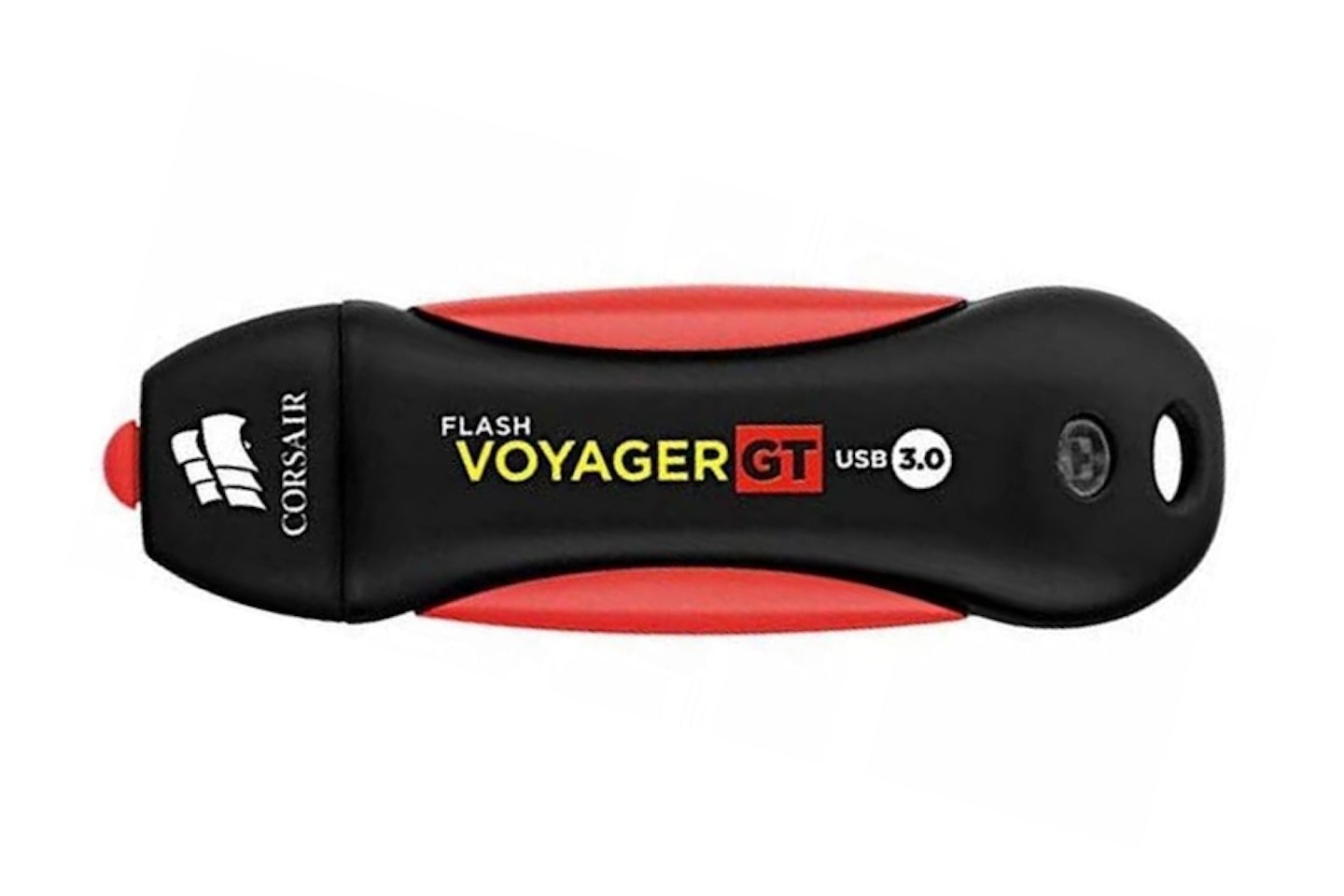 Corsair
CorsairCorsair is a well-known brand in the world of computer peripherals and is known for sturdy builds and reliability. So, we think that this Flash Voyager GT is probably one of the best examples of the brand's know-how. It's a huge 1TB and extremely tough. The rubber casing means your precious recordings will be protected from water – water resistance, not full waterproofing – and drops as it's shock-proof.
Some users find the design a little fussy, and this won't exactly blend in when slotted into any front-facing USB port in your TV, but that's probably to be expected on a drive that's meant to be taken out and about. Space-wise, you've got plenty, so if you've ever been stung by a failing drive after you dropped it or left it in the rain, this is the USB stick for you.
Pros
- Huge storage capacity – ideal for travelling with plenty of your favourite shows
- Water-resistant and shock-proof rubber housing means taking your recordings with you almost anywhere
- Mac and PC compatible if you need to use it for transferring recordings between TV and computer
Cons
- Brightly coloured and eyecatching design – so make sure your TV's side-facing USB port is inset enough to hide it.
| Read speed | 400 MB per second |
| Connection type | USB 3.0 |
| Storage capacity | 1TB |
| Additional features | Water-resistant/shockproof |
Save 26%
Best 256GB USB stick for smart TVs
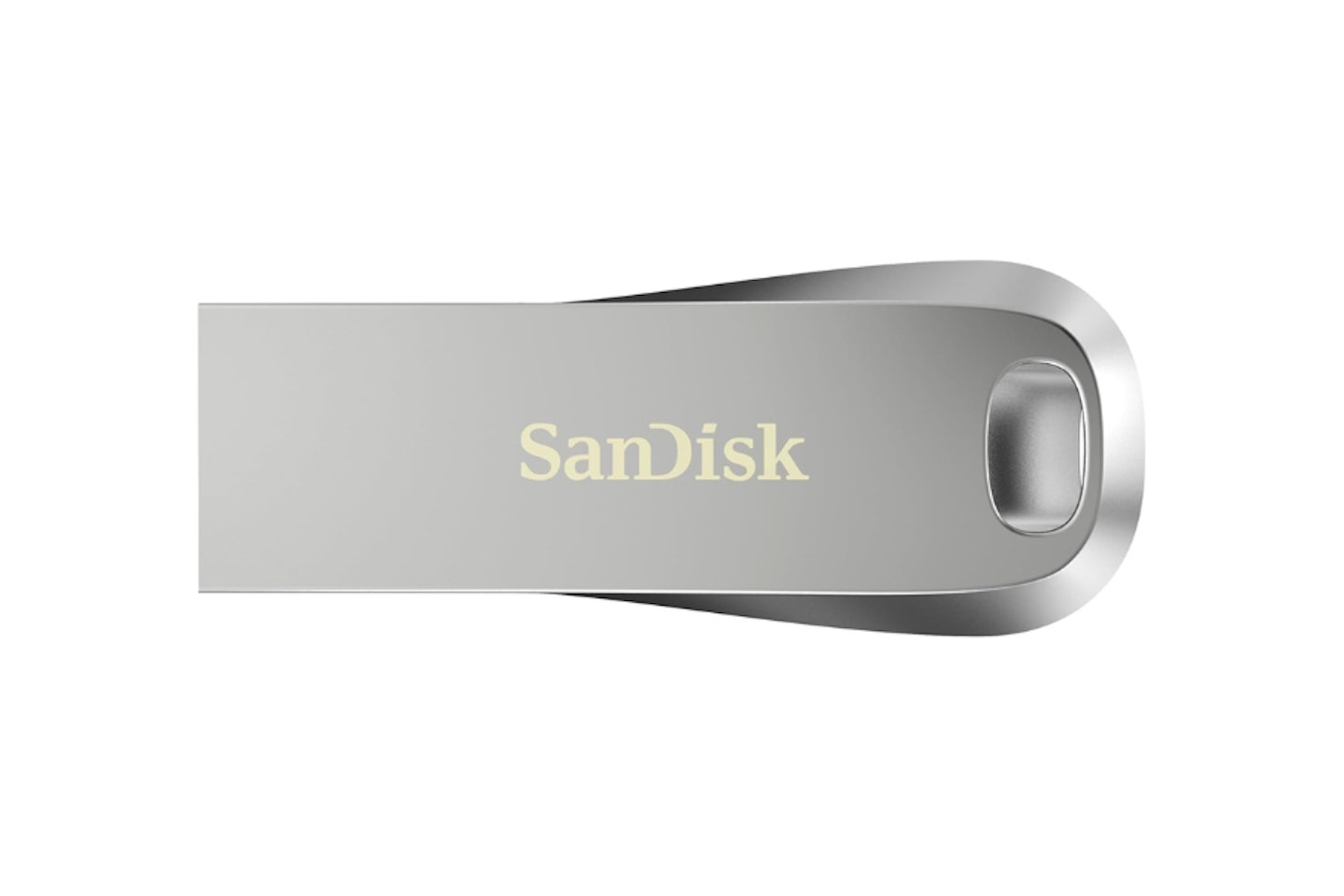 SanDisk
SanDiskAn all-around brilliant USB stick, for us the SanDisk 256GB USB stick is unbelievably high-quality at its price. And, just in case you need to save or sped a little more, there are plenty of storage options to choose from to fit any budget. We think its solid metal case is a refreshing change to all of those black drives on the market, too. Although, as some users report, it is worth mentioning that the metal case does conduct heat very well – although this is a good thing for to keeping the internal circuit board cool, it does come as a surprise to many.
The SanDisk 256GB Ultra Luxe USB flash drive is built to last and has plenty of speed to quickly transfer data to your television for a crystal clear movie experience. We'd recommend picking up at least a 512GB USB stick that'll last you a lifetime. but if you are on a tighter budget, the SanDisk 256GB USB stick is a great alternative and a decent enough size for many a TV viewer's watching habits.
Pros
- Great sturdy design
- Good high-speed data transfer
- Excellent value
Cons
- The metal casing does conduct heat better than plastic, which some users don't like
| Read speed | 400 MB/s |
| Connection type | USB 3.2 |
| Storage capacity | 256GB |
| Additional features | Includes RescuePRO Deluxe software |
Top tip: Always choose USB 3.0 or faster

The most important thing to look for when choosing USB sticks for smart TVs is USB 3.0. Most USB cables use a USB 'Type A' connector – the usual larger rectangular type you can see in the image above. However, in terms of data transfer speed, they're not all the same.
A USB 3.0 (or USB 3.1) connection is an improvement over the older USB 2.0 connection, as is the latest USB-C which is a different size and shape. The majority of sticks now use the USB 3.0/1 port. Its bright blue colour can identify it, whereas the older USB 2.0 is solid black. If your port or memory stick isn't blue, it'll be USB 2.0 - nowhere near fast enough for smooth recording and playback of TV video files.
If your television only carries a USB 2.0 connection, this will bottleneck the speed of your USB 3.0/1 memory stick. The stick will still work plugged into a USB 2.0 port, but it will only work as fast as a USB 2.0 device. Of course, if you are stuck with USB 2.0, it might be worth considering upgrading your TV - either way, we still recommend opting for a USB 3.0/1 stick below, as it will serve you well into the future and be ready for any future tech upgrades.
How to choose the best USB for your smart TV
As mentioned earlier, it's important to make sure that you choose one with a USB 3.0 connection. Even if your TV only has USB 2.0 ports, a USB 3.0 stick will still function - just not at USB 3 speeds.
How much storage will you need?
Consider how much TV you actually want to record and store. Some viewers prefer to record entire seasons of their favourite show and then binge-watch the lot in one go. Others record and then catch up on their show soon after it's been broadcast. For those who like to store several entire series at once, buy your budget's largest storage capacity. We recommend 512 GB for anyone who likes to watch and catch up on a wide range of movies and shows.
Consider the read speed
This leads us nicely to the second thing to watch out for - read speed. While USB 3.0 and above is fast, not all memory sticks are created equal, with each carrying different performance speeds. As a general rule of thumb, the higher the read speed (measured in MB/s), the better. Avoid anything under 100 MB/s when choosing USB sticks for smart TVs.
Travelling far and wide?
You may want to consider how tough a USB stick is if you're often taking your recordings and files with you from one house or office to another. Many USB sticks have a small hole designed for a keyring – but we only recommend doing this if it's a well-built, tough drive; especially if you're wearing your keys on a belt rather than in your pocket.
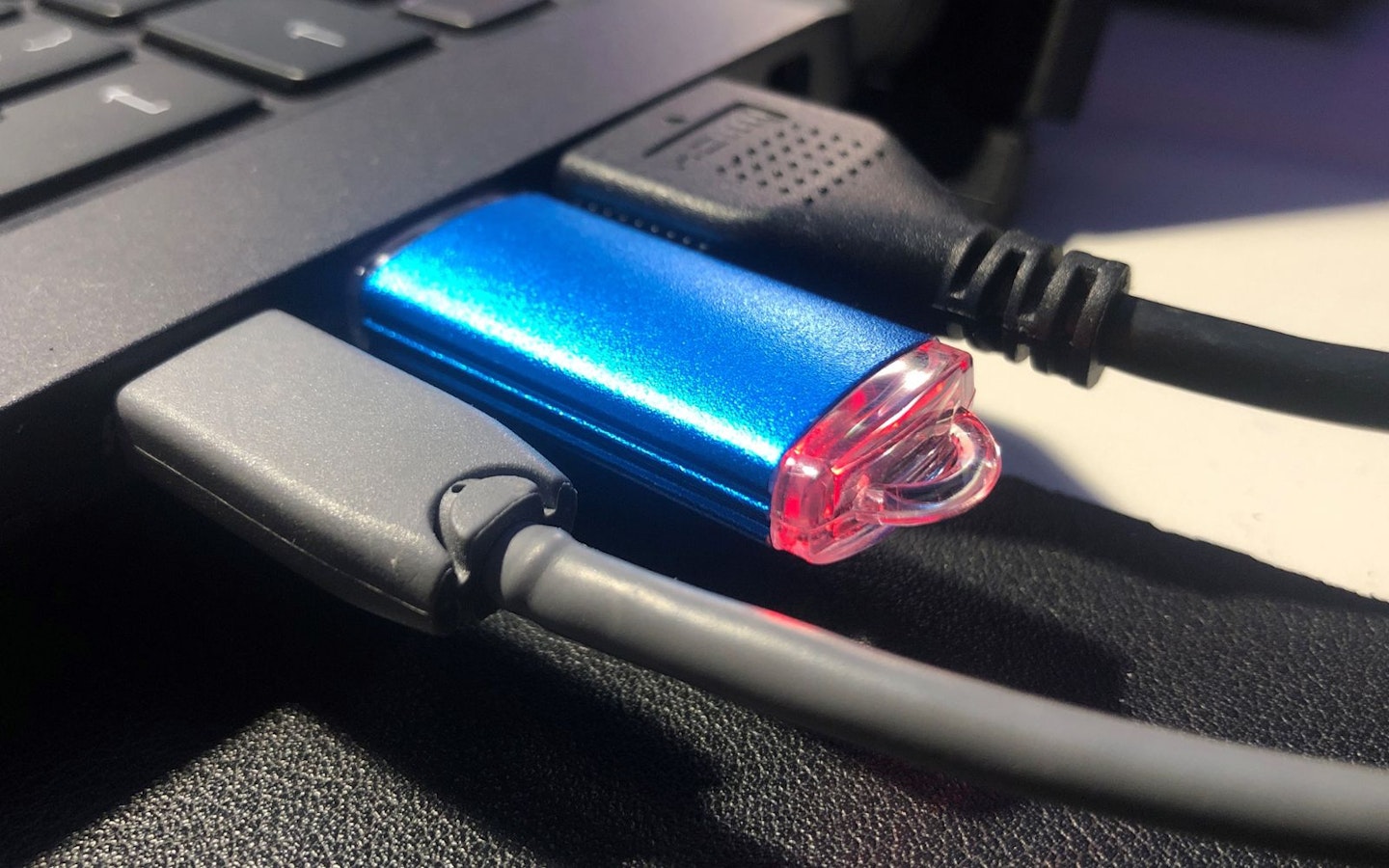
Jargon buster
USB types explained
USB ports come in a few different shapes and sizes. Sometimes this correlates with the maximum data transfer speeds of the device. Notably, in the case of USB A, this is not true.
USB A
This is probably the most commonly found USB connector. Rectangular, with a colour-coded rectangular plastic tab visible inside. Here the colour difference is very important. If your USB port or connector has blue plastic on the inside, it's a high-speed USB 3.0 type. If it's black or grey inside, it's only going to be USB 2.0 - too slow for TV recording and playback.
USB C
This connection type is becoming more and more common now. It's a small rectangle with rounded edges. A key aspect of this design is it's reversible; you can plug it in any way around. Whereas USB A types only fit in one way. USB C is also lightning-fast, delivering a 10Gbps data transfer rate. This is twice as fast as USB 3 and over 20 times faster than USB 2.0.
USB speeds
As long as your TV and USB memory stick are USB 3.0 or greater, you won't have problems recording your TV programmes. But for those who like the stats, here's how each type clocks in:
• USB 2.0: 480Mbps (megabits per second) / 60MBps (megabytes per second)
• USB 3.0: 5Gbps (gigabits per second) / 652MBps
• USB 3.1 (gen 1): Same as USB 3
• USB 3.1 (gen 2): 10Gbps / 10,000Mbps
• USB 3.2 (Only used on Type C connections and later): 5Gbps to 20Gbps, depending on the version.
• USB 4.0 (Used on Apple's Thunderbolt 3 and 4, and Type C connectors): 40Gbps
Best USB sticks for smart TVs in 2025: FAQs
What is the best format for a USB stick for smart TV?
When you hear the term 'format' with USB sticks, this is not to do with the shape of the device. It's the drive's preferred filing system - in other words, how the data is written and organised on the stick. Common formats are FAT32 and NTFS. It's worth knowing that this isn't worth being overly concerned about. Many TVs will simply detect a newly inserted USB drive and format it accordingly.
What size USB stick for TV recording?
For the average TV user who is recording HD films and TV shows, you'll want at least 128GB. Stay mindful of what you've recorded and regularly delete older content though. We can't say exactly how many hours of TV will be stored as this all depends on the resolution it's being saved at. Sometimes your TV will let you choose whether to record at a high or medium resolution to save space. As always, with the different TV brands and models, your mileage will vary.
If you want smart TV recording to be your primary source of entertainment, it's worth looking into external hard drives. Though physically larger than a simple USB stick (and more expensive), they're far more robust. They're also often faster when reading and writing large amounts of data. Alternatively, Freeview recording boxes have their own hard drives built-in, which means you can skip the TV for recording altogether. Storage capacities usually start at 500GB and climb to around 2TB or more.
How much TV can I record on a 32GB USB?
Firstly, 32GB is probably one of the smallest-capacity USB sticks you're likely to find. With modern TVs capable of some very high resolutions like 4K, you're not going to fit as much as you'd like onto one of these. We'd recommend buying a USB stick with a minimum of 128GB or higher if your budget allows.
Why should you trust us?
At What’s The Best, our mission is to provide accurate and reliable reviews, ensuring our readers receive honest and transparent information about the best technology products available. Anything less would undermine our commitment to being a trusted source of unbiased product information.
Our dedicated in-house writing team comprises experts with extensive experience and a genuine passion for technology. Collectively, we have spent decades testing and writing about tech, leveraging our expertise in all our articles, advice pieces and reviews.
We maintain complete editorial independence and do not accept payment for product reviews. Our writers have full control over their content, ensuring that products are selected based solely on the needs of our readers. While we may earn commissions or other compensation from links on our website, this never affects our product choices. These links enable us to continue offering valuable consumer advice, without compromising the integrity of our reviews.
William Lobley oversees, curates and researches listicles and reviews as many products as his home office can handle.
He has spent nearly five years writing about tech, audio, outdoors and fitness and has reviewed everything from smartphones to ice baths. In addition, he's well-versed in sniffing out the best deals and savings the internet offers.
When not at his desk writing, reviewing or deal-hunting, he'll be relaxing with Japanese crime novels, bingeing some classic anime, strolling the countryside or at the gym listening to the heaviest metal Spotify has to offer.
Subscribe to the What’s The Best Newsletter to keep up to date with more of the latest reviews and recommendations from the What’s The Best team.
